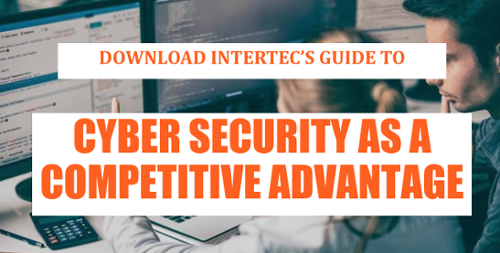
As you’re probably aware, information security is a growing concern for all organizations. Prioritizing the privacy of your data is crucial to protecting your reputation and the quality of your business. Mishandled and breached data can leave you vulnerable to attacks and result in significant losses, which is why many organizations are looking to certify their information security management systems (ISMS). Recently, we’ve talked a lot about the ISO 27001 certification, a globally recognized security certification. This is a largely beneficial certification as it provides you with a highly regarded certification and significantly enhances the security practices in your organization. Because this certification is so popular, alternative options often get overlooked. SOC 2 is another option in improving your ISMS. Similar to ISO 27001, SOC 2 is an auditing procedure that ensures that service providers securely manage data to protect the interests of your organization and the privacy of its customers. We will discuss what SOC 2 entails for your organization, in addition to its significance and how it differs from similar information security compliance processes.
What is it?
SOC 2, developed by the American Institute of CPAs, defines criteria for managing customer data based upon five trust service principles; security, availability, processing integrity, confidentiality, and privacy. Each principle consists of smaller specified categories that define the specific measures to be taken while implementing each principle. The security principle refers to the protection of system resources against unauthorized access and consists of three areas; network/application firewalls, two-factor authentication, and intrusion detection. Implementing access controls will help prevent potential system theft, abuse, unauthorized data access, misuse of software, and improper disclosure or altering of information. There are many helpful security tools to enhance your security, such as network and web application firewalls, two-factor authentication, and intrusion detection. All of which are highly successful in preventing information-related security breaches.
The second trust principle is availability, which refers to the accessibility of your ISMS as stipulated by a contract or service level agreement. Within this agreement, both parties will determine a set minimum acceptable performance level for system availability. It is important to note that this principle does not address system functionality and usability. Rather, it concerns security-related criteria that may affect availability. Critical components of this include monitoring network performance and availability, site failover, and security incident handling.
Following availability is the processing integrity principle. This addresses whether or not a system will achieve its purpose, such as delivering the correct data at the right time. For this to be verified, data must be complete, valid, accurate, timely, and authorized. As this principle specifically focuses on processing integrity, it does not necessarily imply data integrity. If data should be input into the system while containing errors, detecting these errors is not the responsibility of the processing entity, so you must ensure your data is error-free. As a result, to ensure processing integrity, it's best practice to implement data processing monitoring and quality assurance procedures.
The fourth trust principle involves confidentiality. Data is considered to be confidential if its access and disclosure are restricted to a specific set of persons or organizations. This includes data intended only for company personnel, including business plans, intellectual property, internal price lists, and other sensitive financial information. A prominent aspect of confidentiality includes encryption, which is vital for protecting confidentiality during data transmission. Network and application firewalls combined with access controls can be used to safeguard information being processed and stored.
The final trust principle is the privacy principle. Privacy addresses the system's collection, use, retention, disclosure, and disposal of private information in compliance with an organization's privacy notice. It is also essential that this complies with the criteria outlined in the AICPA's generally accepted privacy principles (GAPP). It is paramount that your organization protect any and all personal identifiable information (PII), which involves any data that can distinguish an individual, such as their name, address, and social security number. Additional sensitive information can include data related to health, race, sexuality, and religion, all of which require additional protection. Controls must be put in place to protect PII from unauthorized access.
The specifics of these principles will be unique to each organization in what you determine to be necessary and beneficial to enhancing your security. There will also be differences in how you implement principles. There are still business requirements that need to be met by all, but you have the ability to design your own controls to comply with one or more of the five trust principles. The internal reports you create to satisfy these principles will provide you with crucial information about how your service provider manages data. There are two types of SOC reports. Type I describes a vendor’s systems and if their design is suitable to meet trust principles. Type II details the operational effectiveness of those systems.
Why is it Important?
While SOC 2 compliance is not a requirement for SaaS and cloud computing providers, it is largely beneficial to securing your data. Underdoing the regular audits required by SOC 2 will ensure that your organization is in continuous compliance with security regulations while consistently enhancing and guaranteeing the protection of your data. Achieving SOC 2 compliance will demonstrate that your organization maintains a high level of information security, protecting both company and customer data. While you will be required to complete rigorous compliance requirements, they are to ensure that you are responsibly handling data at all times. Should you choose to comply with SOC 2 requirements, your organization will be less likely to suffer data breaches or violate users' privacy. The security measures that you implement will protect your company from the adverse effects of breaches such as regulatory action, reputational damages, and hefty fines.
SOC 2 vs. ISO 27001
If you are looking into information security measures, you have likely surveyed a few options. While any option in enhancing information security will be beneficial, it’s important to consider some key differences between options. Arguably the most popular ISMS certification is ISO 27001, which is fairly similar to SCO 2. Both processes are designed to instill trust with clients that you are protecting their data, and each covers important areas such as confidentiality, integrity, and availability of data. One of the primary differences between these two is that SOC 2 primarily focuses on proving that the security controls that protect customer data have been implemented. In contrast, ISO 27001 requires you to prove that you also have an ISMS in place to manage your information security on an ongoing basis. This will require adding several additional controls around proving the quality of your management system, in addition to undergoing regular review for conformity. As a result of these extra processes, ISO 27001 typically requires about 50-60% more time (approximately 12-18 months) to complete than SCO 2 (approximately 6-12 months). This difference is important to consider if you are on a time crunch, but quality may be compromised should you choose to rush the process. Furthermore, while both options are widely recognized, if you are working internationally, ISO 27001 tends to be more widely accepted by clients in other regions.
Whichever certification you may choose, you are setting your organization up for success by enhancing your information security protocols. With enhanced security, you will reduce risks and breaches of data in your company, thus boosting confidence in customers and business partners alike. Consider which option is the best fit for you and strive towards better-protected data.









